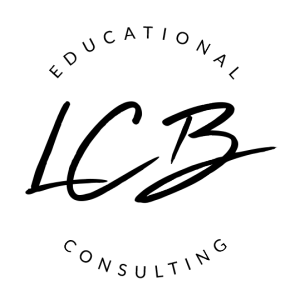A few weeks ago, a Writing Project colleague engaged a group of us in a conversation about how teachers might end the school year. This is typically an easy question. Most districts have traditions and rituals in place for ending the year, along with district assessments to measure academic growth. None of these typical ways to end will be in place this year, so this easy question morphed into several challenging questions:
How can we help students find a meaningful conclusion to this strange school year? What important elements of ways we typically wrap the school year can we preserve in a virtual assignment?
I started thinking about the ways I typically wrapped up the learning for the year in my own classroom. For many years, I asked students to write me a letter (or any format they wished to create) reflecting on their growth as a reader and as a writer. I also asked them to create an “other” category to reflect on something else they felt they learned through the year. I wanted to hear what they thought about their own learning: successes, struggles, next goals, and personal reflections to make sense out of everything.
The “other” category often spoke to my teacher heart, and that section was the reason a letter ended up in my “forever” file. One of my last years of teaching, a boy wrote about how he learned he was not such a misfit after all. One of my early years of teaching, a girl wrote about how journaling helped her process and figure out a way to let go of an abusive boyfriend. This was the learning that I worry virtual classrooms cannot foster, at least not as well.
The teenage years are a critical time for social interaction. Robbed of face-to-face connections, teens are not developing their identities through normal social interactions, rituals, and traditions.
Thinking about these issues of isolation, I brainstormed a list of key elements of an end-of-year activity. I landed on two: reflection and choice.
Asking students to process and reflect on the realities of this school year might help them make some sense of their world. Having worked with teenagers for more than 30 years, I also know meaningful reflection is not something all teens do naturally. Choice is always important for teens, but distance learning elevates choice to a critical component to me. Now I just needed to combine reflection with some choices for self-expression to create an answer to the question of how to wrap up this year.
First, students would need to review our common definition of reflective writing. For this blog, we will use this one: Communicating your thoughts and feelings about experiences, opinions, events, or ideas; exploring your learning and gaining self-knowledge/insight.
Next, I would tap into prior knowledge by asking groups of students to post what they remembered from mentor texts we had read during the school year. Groups could collaborate on Padlet, meet in small breakout rooms on Zoom, or use whatever virtual platforms your district provides.
Some of the mentor texts I have used for reflective writing include “Fish Cheeks” by Amy Tan and “Us and Them” by David Sedaris for middle schoolers; House on Mango Street by Sandra Cisneros and Night by Elie Wiesel for students in 9th/10th grade; and selections from Walden by Henry David Thoreau and from Citizen by Claudia Rankine for students in 11th /12th grade. Students could dip back into key parts, such as the last segment of “Fish Cheeks,” to review what they had learned about reflective writing early in the year.
Because video is a key component of distance learning, the mentor text I would use for this lesson would be in video format. I recommend an old favorite: the Favorite Poem Project. There are many, many potential mentor texts on this site, but the one I have used with success is John Doherty, a construction worker from Boston, who explains why Whitman’s Song of Myself is his favorite poem. I would ask students to do what we typically do when we look at a mentor text for craft.
Noticing craft: What do you notice about this video? What resonates with you as a viewer and listener? What seems to be important for this mode of expression?
Listen.
Listen again, and jot notes.
Then as a class, we would build a list of qualities we noticed in this mentor text, a list to help shape our idea of what reflective thinking/writing includes. Here is an example a class might shape from the video:
- Share a little background information.
- Reflect on your topic: How do you feel about it? What makes sense to you? What doesn’t? Why is it important to you?
- Draw conclusions or make implications: How is this important in a larger context, such as next year (or several years)? (Older students might use a specific critical lens.)
If there was enough time, I would ask them to listen a third time to see if they wanted to add anything to our list. Then we would discuss the list, and I would pose my typical questions: What would be easy about this kind of reflection? What would be challenging?
Working through a mentor text to create a list of qualities would be one full mini-lesson. If you want to extend this lesson, students could select another video on their own to “test” the class list of qualities. They could also create a Flipgrid to share a reflection on their own poem and give feedback to each other if you wanted to provide some practice.
For an end-of-year assignment, though, reflective writing (or a reflective video) would be part of a larger assignment. I decided the best way to provide students with options would be a choice board. Choice boards seem to be the perfect distance-learning tool, and I found some easy-to-use templates on helloteacherlady’s blog: helloteacherlady.com. Then I brainstormed ideas for activities at various difficulty levels.
I linked a sample board here.
All of the choices have components students would be familiar with from earlier in the school year. My goal is that each student will find a vehicle for self-expression and reflection no matter what activity he/she chooses to complete. There are so many potential adaptations for the choice boards, and the template is easy to revise however you wish.
After students completed the activities, another essential part would be to share and to provide responses to each other’s products. One way students could share would be to post their final product to a Padlet wall, such as this one. Then students could provide feedback to some of their peers with a little guidance if you wanted to provide it.
While no activity can substitute for finishing a school year with friends, maybe reflecting and sharing will help students make a little sense of their current reality. Maybe it could help us, too.

